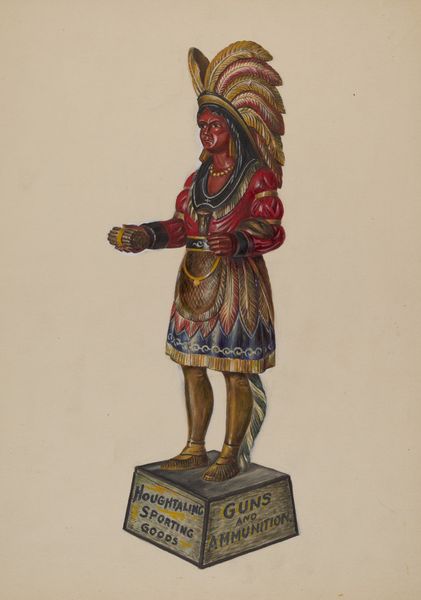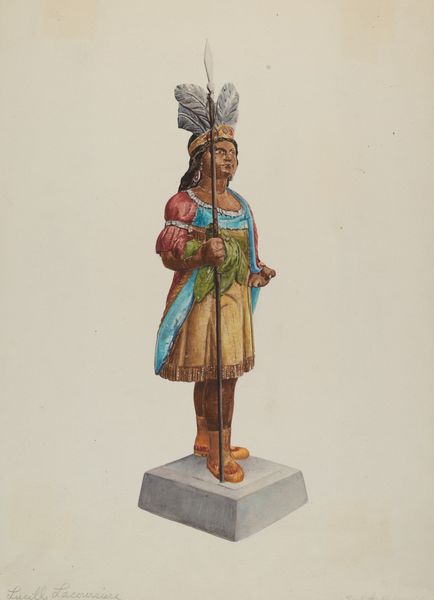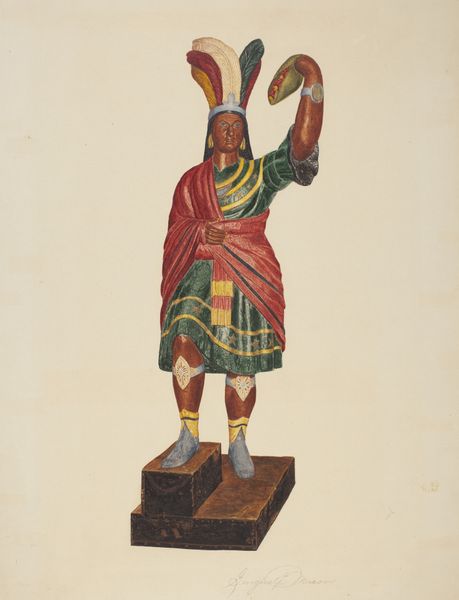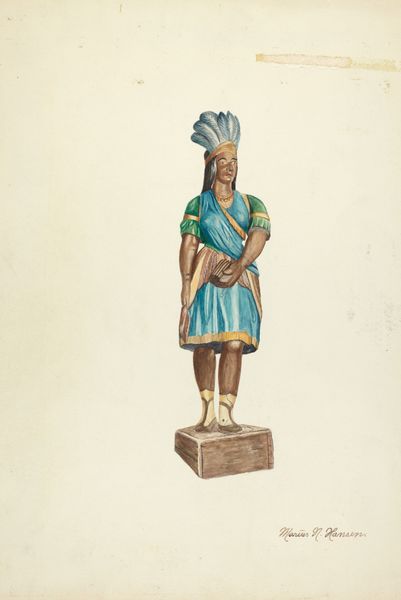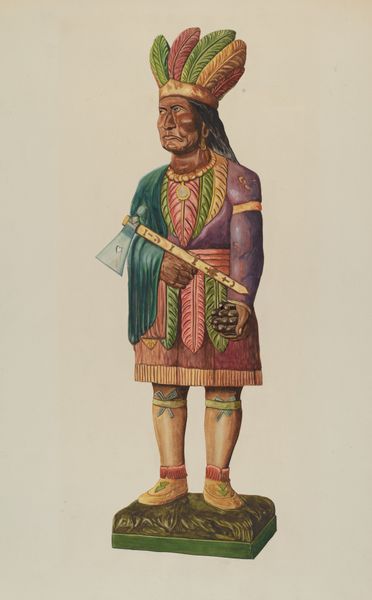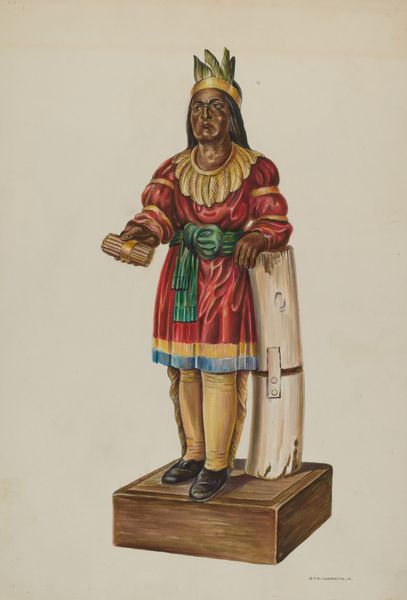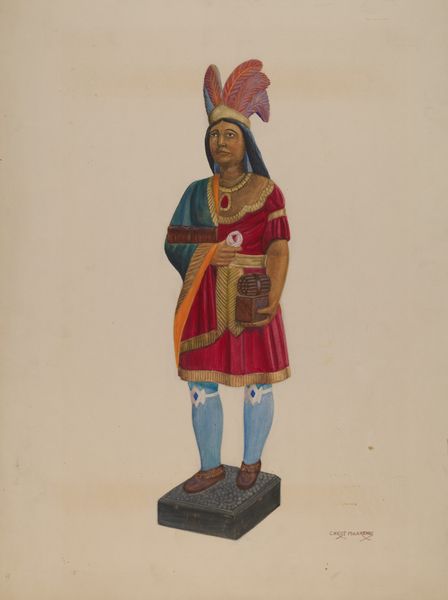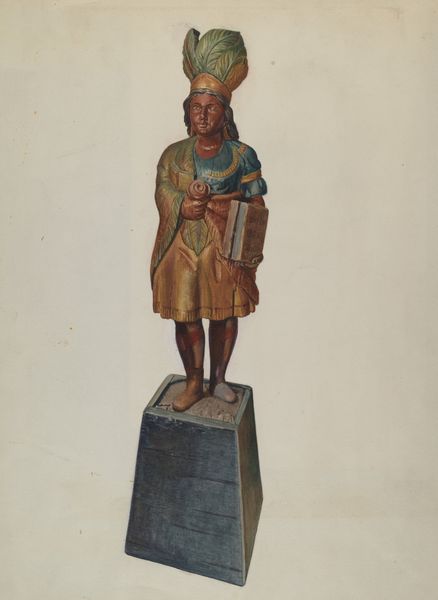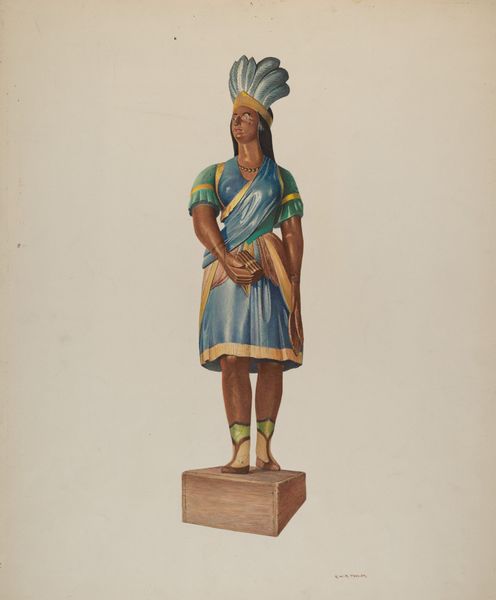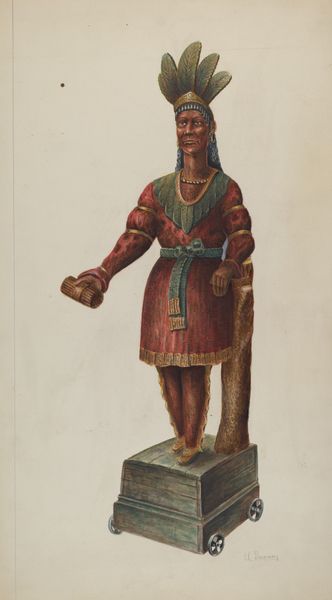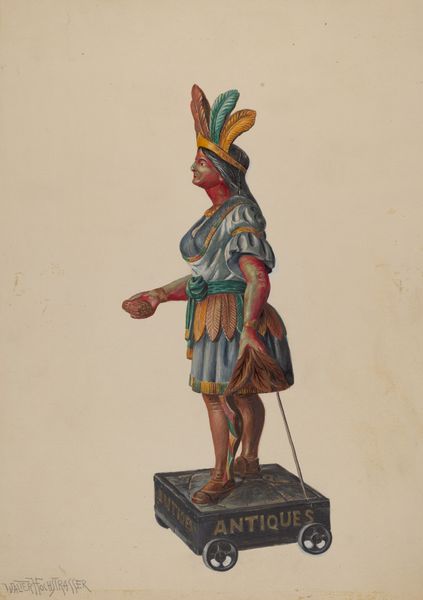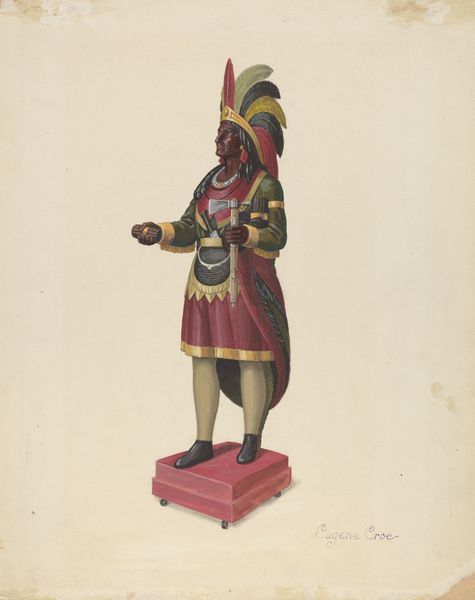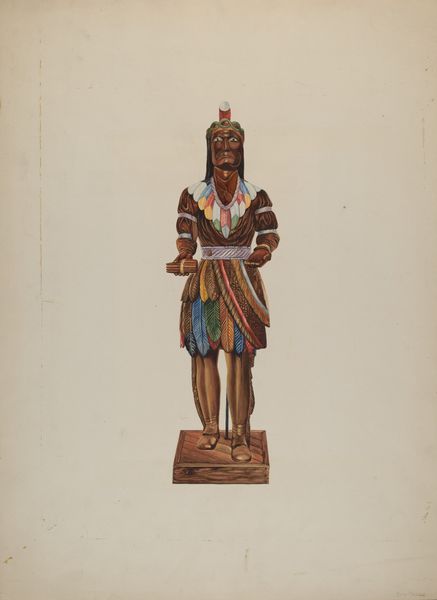
painting
#
painting
#
figuration
Dimensions: overall: 73.9 x 50.9 cm (29 1/8 x 20 1/16 in.) Original IAD Object: 76" high; 27" wide
Copyright: National Gallery of Art: CC0 1.0
Editor: This is Eugene Croe's "Cigar Store Figure," made around 1937. It appears to be a rendering of a wooden sculpture, probably in watercolor. The figure itself seems so symbolic, so burdened by stereotypical representation. What is your read of this artwork? Curator: For me, it's fascinating to consider the economic realities behind this piece. It depicts a mass-produced object, meant for commercial purposes, essentially advertising tobacco. The question of labor arises - who was making these sculptures? What were their working conditions? And how did the commodification of Indigenous imagery contribute to their socio-economic position? Editor: That makes me think about how the raw materials—the wood, the paints—connect to larger systems of trade and consumption in the 1930s. Was Croe critiquing this? Curator: It's unlikely the artist intended a direct critique, but rather, documenting an element of material culture of his time. What about the materials used in the watercolor, versus the likely materials of the actual cigar store figures? Does the contrast between image and object affect your understanding? Editor: Absolutely! Watercolor feels delicate and "fine art," almost in opposition to a bulky wooden figure placed outside a shop. Seeing it painted almost elevates its status. I hadn't considered the socio-economic aspect before. Curator: It highlights the complex relationship between art, craft, and the market. Editor: I agree, I'll definitely consider these material and commercial connections next time I see similar works. Thank you!
Comments
No comments
Be the first to comment and join the conversation on the ultimate creative platform.
